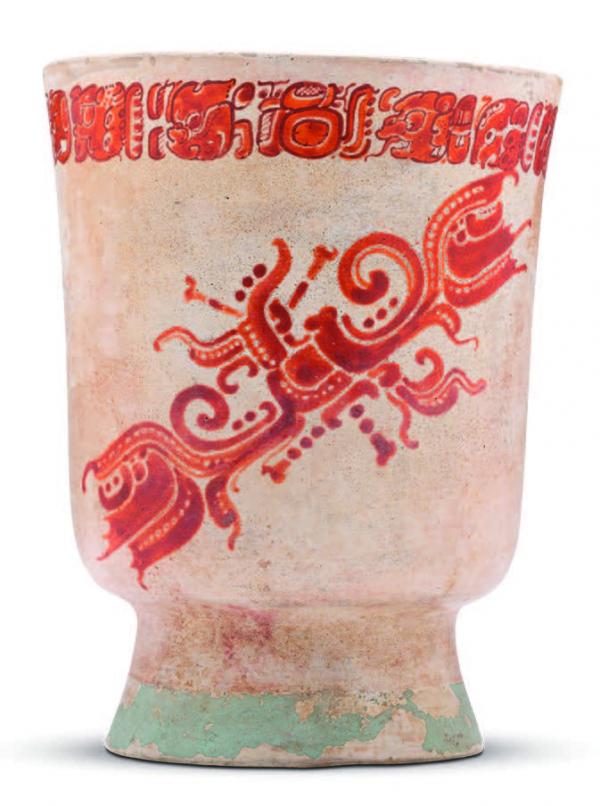This vessel's elegant shape and careful manufacture are revealed in x-ray images that show coiling was used to craft the cylinder's fine, even walls. The artist used slips containing an iron-bearing mineral (probably hematite) to paint faces of serpentine supernatural entities, each with a waterlily emerging from its forehead. These are two images of the Waterlily Serpent, an entity that inhabits the surface of water, a liminal location between cosmic realms. The inscription is the vessel's dedication statement, which identifies it as a drinking vessel for chocolate mixed with corn. After firing the vessel, the artist applied a band of stucco and Maya Blue pigment, made by heating indigo with special clays, a technique invented by the Classic period Maya.
Collaborative research performed by LACMA conservators and curators have revealed that every aspect of this vessel's manufacture—including the mixing of the clay, the shaping of the pot, and the painting of images and inscriptions—was extremely careful and skilled, such that we have fondly nicknamed it "the perfect cup." Studying this artwork has vastly increased our respect for the ancient artist or artists who made it.
On view in Revealing Creation: The Science and Art of Ancient Maya Ceramics, through June 4, 2017.



